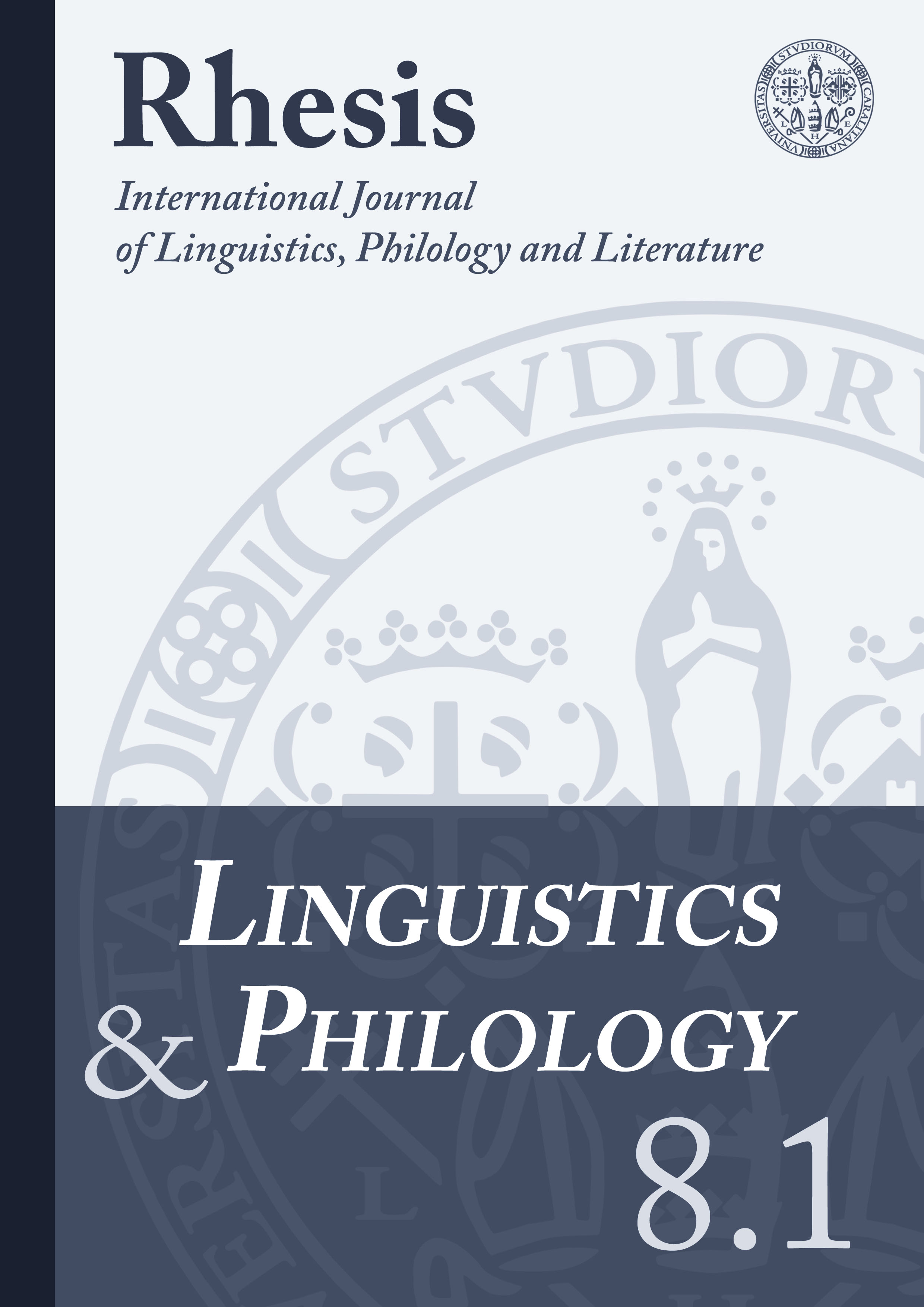Il clitico [ŋkɛ] in sardo orgolese: dalla deissi all’aspetto
Abstract
The study above focuses mainly on the function of the clitic [ŋkɛ] and its use in ‘Orgolesu’, a variety of the Sardinian language. It has been the purpose of this study to provide a first overview of the function, semantics and grammaticalization of this clitic, which ranges from the spatial to the actional and the aspectual domains. The research framework chosen for this research is the theory of grammaticalization, defined as «an approach to language study, one that highlights the interaction of use with structure, and the non-discreteness of many properties of language» (HOPPER and TRAUGOTT (2003 [1993]: xvi). The clitic [ŋkɛ] showed to be an example of ‘polygrammaticalization’ as it has developed different grammatical functions in different constructions. As a matter of fact, it can encode ‘distance’ in locative and existential constructions as well as directional meanings such as ‘motion from’ and ‘motion towards’. In the aspectual domain, the clitic [ŋkɛ] codifies telic meaning and is therefore used to express change of state and perfective meanings. To sum up, the aim of this research is to show that the multi-functionality and polysemy of the clitic [ŋkɛ] can be explained diachronically by examining its original meaning, and synchronically through its diverse uses. From an originally deictic basic meaning, the clitic [ŋkɛ] has grammaticalized and spread to perform actional, temporal and aspectual functions.
Downloads
References
BERTINETTO, Pier Marco (1997), Il dominio tempo-aspettuale. Demarcazioni, intersezioni, contrasti. Torino: Rosenberg & Sellier.
COMRIE, Bernard (1976), Aspect. Cambridge: Cambridge University Press.
ENFIELD, Nick (2003), “Demonstratives in Space and Interaction: Data from Lao Speakers and Implications for Semantic Analysis”, in «Language» 79, 1, 82-117.
HASPELMATH, Martin (1997), From Space to Time. Temporal Adverbs in the World’s Languages. München & Newcastle: Lincom Europa.
HOPPER, Paul J. and Elizabeth TRAUGOTT CLOSS (1993), Grammaticalization. Cambridge: Cambridge University Press.
JONES, Michael Allan (2003 [1993]), Sintassi della lingua sarda [Traduzione a cura di R. Bolognesi]. Cagliari: Condaghes.
JUNGBLUTH, Konstanze [2003], “Deictics in the Dyad of Conversation. Findings in Spanish and some crosslinguistic outlines”, in Friedrich LENZ (ed.), Deictic Conceptualization of Space, Time, and Person, Amsterdam & Philadelphia: Benjamins, 13-40.
JUNGBLUTH, Konstanze and Federica DA MILANO (2015), Manual of Deixis in Romance Languages. Berlin & Boston: Walter de Gruyter.
LYONS, John (1968), Introduction to theoretical linguistics. Cambridge: Cambridge University Press.
PUDDU, Mario (2000), Ditzionàriu de sa limba e de sa cultura sarda. Cagliari: Condaghes.
SPREAFICO, Lorenzo (2009), Problemi di tipologia lessicale. I verbi di moto nello Standard Average European. Roma: Bulzoni.
TAGIURI, Renato and Luigi PETRULLO (1958), Person perception and interpersonal behavior. Stanford: Stanford University Press.
VIRDIS, Maurizio (1988), “Sardisch: Areallinguistik (Aree linguistiche)”, in Günter HOLTUS, Michael METZELTIN, Christian SCHMITT (eds.), Lexikon der Romanistischen Linguistik. Vol, IV: Italienisch, Korsisch, Sardisch. Tübingen: Niemeyer, 897-913.
VENDLER, Zeno (1967), “Verbs and times”, in «Linguistics in Philosophy» 66, 2, 97-121.
WAGNER, Max Leopold (1960-1964), Dizionario etimologico sardo. Heidelberg: Carl Winter Universitätsverlag.



